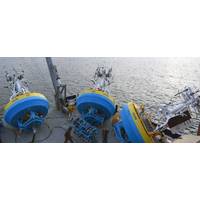
OOI‘s Pioneer Array Relocating to Southern Mid-Atlantic Bight
A team of scientists and engineers from Woods Hole Oceanographic Institution (WHOI) left Charleston, SC aboard the R/V Neil Armstrong to begin test deployments in preparation for the installation of an Ocean Observatories Initiative (OOI) ocean observing system in its new location in the southern Mid-Atlantic Bight (MAB). The science team will deploy two test moorings off the coast of North Carolina, occupying shallow and deep sites of the proposed array. The deployments will supplement computer modeling to ensure the mooring designs perform as expected in the MAB environment. Once the array is fully
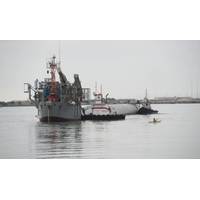
Eye on the Navy: Navy extends Life for Research Ships, but Says Farewell to FLIP
travel the world’s oceans and help students and scientists make new discoveries,” said Virginia Armbrust, professor and chair of the UW School of Oceanography, when the ship was returned to service following its overhaul.The Navy also has two Ocean-class oceanographic research ship, R/V Neil Armstrong (AGOR 27) (operated by WHOI) and R/V Sally Ride (AGOR 28) (operated by SIO) entered service in 2015 and 2016 respectively, as well as R/V Kilo Moana, which was delivered to the Navy in 2003 and is operated by the University of Hawai‘i Marine Center.In addition to the six Navy-owned oceanographic
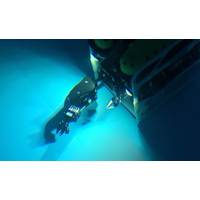
Saab Seaeye's Falcon for Ocean Research
completed in March 2019, along with verification of mobilization and de-mobilization requirements, integration of navigational systems, and included operating the vehicle in currents and performing test recoveries of CGSN anchor types.First project deployment of the Falcon was in April onboard the RV Neil Armstrong. During the multi-leg 21 day cruise, the CGSN team successfully performed mooring inspections and anchor recoveries. Future operations could take place in water depths of up to 450m and will include surveying mooring locations, locating existing anchors, and engaging hooks and lines for recovery

MTR100: #5 Dr. Mark Abbott, WHOI
total there are six research departments and more than 40 centers and labs, employing approximately 950 employees, including more than 500 scientists, engineers, ship’s crew, and technicians. WHOI operates three ships, the global class research vessel Atlantis; the ocean class research vessel Neil Armstrong; and the coastal vessel Tioga, small boats. It also have several underwater vehicles, from the human-occupied submersible Alvin; to ROVs, AUVs, hybrids and towed vessels.But the value proposition of WHOI far transcends the numbers, as WHOI serves as a hub for technology, business and finance
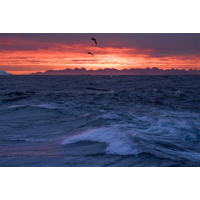
Waters West of Europe Drive Ocean Overturning
, also includes the release of over 100 deep-drifting buoys to trace the pathways of the cold dense waters traveling southward near the sea floor. Much of the at-sea work required to put the observing system in place was carried out from the WHOI-operated research vessels Knorr (now retired) and Neil Armstrong.“The weather at these latitudes in the North Atlantic can be nasty, even in summer, demanding highly-skilled ships’ crews, technicians, engineers and scientists working hard, night and day, as one team,” said Bower.“Oftentimes the harsh weather systems required us to play
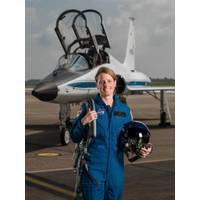
WHOI’ O’Hara Selected for NASA Astronaut Program
oceanographic research. In 2007, WHOI biologist Tim Shank in Alvin two miles beneath the surface of the ocean had a radio conversation with NASA astronaut Suni Williams aboard the International Space Station. In 2012, the U.S. Navy named the first Ocean Class research vessel, operated by WHOI, after Neil Armstrong, the first man to walk on the moon
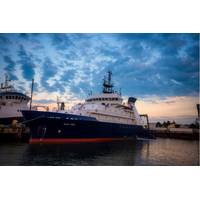
RV Sally Ride Enters Dry Dock for Maintenance
The Sally Ride, a Neil Armstrong Class Auxiliary General Oceanographic Research (AGOR) vessel, dry docked at Bay Ship and Yacht on April 15, 2017, to carry out modifications to superstructure and to perform general vessel maintenance. Named for the late astronaut Sally Ride, the ship is 238 feet long and incorporates the latest technologies, including high-efficiency diesel engines, emissions controls for stack gases, and new information technology tools both for monitoring shipboard systems and for communicating with the world. It will serve to provide scientists with the tools and capabilities
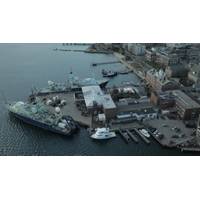
WHOI, Town of Falmouth Win Seaport Economic Council Grant
them to be directly involved in the project planning process to minimize disruption to local residents and businesses during future construction. WHOI’s Iselin Dock is the centerpiece of its waterfront facilities and home port to three research vessels – the Atlantis, the Neil Armstrong, and the Tioga – along with test facilities, underwater vehicle labs, and shops. “We expect that the renewal the dock and waterfront facilities will create a capability that will foster the next 50 years of innovation and seagoing oceanography,” Munier said
Halls of Higher Learning
also the lead organization on the coastal and global nodes of the NSF-funded Ocean Observatories Initiative. WHOI designed, built, deployed and maintains the coastal Pioneer Array off New England and four global arrays (off Alaska, Greenland, Chile, and Argentina) and have also begun operation of the Neil Armstrong, the nation’s newest and most advanced research vessel. The Institution has produced major contributions to the fields of oceanography and marine sciences, including most recently studying impacts of the great 2015-16 El Nino on corals and exploring strategies to conserve vulnerable


 February 2024
February 2024





